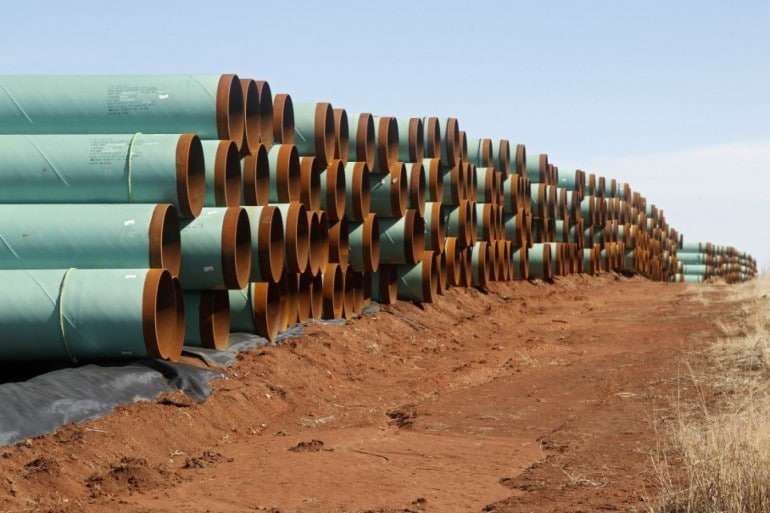The Volokh Conspiracy
Mostly law professors | Sometimes contrarian | Often libertarian | Always independent
The growing battle over the use of eminent domain to take property for pipelines

At the ThinkProgress website, Alejandro Davila Fragoso has an interesting article on the growing conflict over the use of eminent domain to seize property for pipelines:
When an oil pipeline now poised to cut through four Midwestern states was first proposed in 2014, the project quickly got pushback from environmentalists and some landowners on the pipeline's route.
For one group, this piece of fossil fuel infrastructure was a poor investment in a time of human-caused climate change and increasing pollution. For the other, it was a threat to their land and their property rights….
[W]hat's happening in Iowa is not an isolated case. The United States has the largest network of energy pipelines in the world, with more than 2.5 million miles of pipes. Investment in U.S. oil and gas infrastructure has in addition increased since 2010 by some 60 percent, according to an American Petroleum Institute study. Investment climbed from $56.3 billion in 2010 to $89.6 billion in 2013, and, according to the study, will remain on average greater than $80 billion until after 2020, before it decreases to $60 billion by 2025.
Experts reached said the fracking boom that opened new oil and gas reservoirs for exploration in the mid-2000s caused this investment growth as it prompted companies in need of land to apply for eminent domain powers. "We have a lot of [pipeline] building going on, and at least with regards to oil pipelines, a lot of states in the process of reviewing those pipelines," said Alexandra Klass, a Distinguished McKnight University Professor at the University of Minnesota.
The growing use of eminent domain to seize property for pipelines has generated opposition from an unusual coalition of liberal environmentalists and conservative and libertarian property rights advocates. This alliance has recently spearheaded the enactment of laws limiting pipeline takings in Georgia and South Carolina. It has also supported litigation that has led to court decisions limiting pipeline takings in several states.
Pipeline takings have also become more controversial as a result of the enormous political backlash generated by the Supreme Court's 2005 decision in Kelo v. City of New London, which ruled that it was permissible for the government to take property from one private owner and give it to another in order to promote "economic development." While "economic development" and pipeline condemnations are legally distinct and raise somewhat different policy issues, the controversy over Kelo led to greater skepticism about a variety of different uses of eminent domain. Like the struggle over pipeline takings, the reaction against Kelo also featured unconventional left-right coalitions.
I discuss pipeline takings in greater detail in Chapter 8 of my recent book on eminent domain and the Constitution. In my view, some pipeline condemnations do meet the Fifth Amendment's requirement that eminent domain can only be used to take property for a "public use." Many pipelines are "common carriers" required to allow the entire public to use their facilities. But, as explained in the book, in many cases the common carrier requirement is either ignored or only given lip service. Even pipeline takings that fully comply with public use restrictions still sometimes inflict harm on property owners and the environment that outweighs any likely benefits.
Unlike in the case of takings for private economic development, I am not convinced that we should ban pipeline condemnations completely. Pipelines often face more severe "holdout" problems than conventional development projects. But pipeline condemnations should be much more tightly constrained than is currently the case in many states.


Show Comments (0)